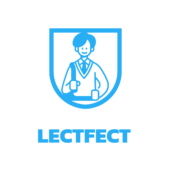We’ve all been there. That sinking feeling when you watch your balance dwindle after what was supposed to be a fun gaming session. The cards didn’t fall right, the slots seemed cold or maybe the roulette ball just wouldn’t land where you needed. It’s part of gambling, sure, but it still stings.
That’s where cashback bonuses come into play. They’re like a little insurance policy against bad luck—not enough to make you whole, but just enough to take the edge off those painful losing sessions.
Real Way Cashback Works at Online Gambling Sites
Cashback isn’t complicated, but there are details worth knowing if you want to get the most value. I checked out how Melstroy Casino structures their cashback program last month, and it’s pretty typical of what you’ll find at most reputable gambling sites. The basic idea is simple: you get back a percentage of your losses over a specific period. But the devil’s in the details, and those details vary wildly from one site to another.
Cashback Calculation Methods
Not all cashback is created equal. The method used to calculate your rebate makes a huge difference in how much you’ll actually get back.
Here are the most common approaches:
| Calculation Method | How It Works | What It Means For You |
| Net Loss Rebate | Percentage of (Total Losses – Total Wins) | Only pays if you’re down overall for the period |
| Wager-Based | Percentage of total amount wagered | Pays regardless of whether you won or lost |
| Game-Specific | Different rates for different games | Usually higher for games with lower house edges |
| Tiered | Rate increases with player level/status | Rewards loyalty and higher volume play |
Most online gambling sites use the net loss rebate model. It’s straightforward—if you deposit $100, lose it all, and the cashback rate is 10%, you’ll get $10 back. If you deposit $100, win $50 but then lose it all (ending up down $50), you’d get $5 back at that same 10% rate.
Fine Print That Changes Everything
Looking closer at cashback offers reveals some crucial differences. These details can transform a seemingly generous offer into something much less valuable:
- Cashback caps (maximum amount you can receive)
- Minimum loss requirements to qualify
- Time restrictions on when cashback is calculated
- Wagering requirements on the cashback itself
- Game restrictions that exclude certain titles
- Expiration dates on when you must use the cashback
The most player-friendly cashback programs have few or none of these restrictions. They pay the rebate as real cash with no strings attached. The most restrictive ones essentially convert your cashback into a standard bonus with hefty playthrough requirements.
Why Cashback Matters More Than You Think
Most players fixate on welcome bonuses and free spins when choosing where to play. Those are flashy, exciting and give you an immediate boost. Cashback is the boring, practical option that doesn’t get the spotlight.
But here’s a secret that experienced gamblers know: over time, a good cashback program often provides more value than those splashy sign-up offers.
Long-Term Math Works In Your Favor
Think about it this way. Welcome bonuses happen once, while cashback can apply to every losing session for as long as you play on a site.
Let’s run some basic numbers. Say you play regularly and wager $1,000 every month:
- With a house edge of 5% (typical for many casino games), you’d expect to lose about $50 per month on average
- With a 10% cashback program, you’d get back $5 of those losses
- Over a year, that’s $60 in cashback
That $60 might not sound impressive, but it effectively reduces the house edge you’re facing by 10%, which is significant for any gambler who plays regularly. For higher-volume players, the numbers get even more meaningful.
Psychological Benefit Nobody Talks About
Beyond the pure mathematics, there’s a psychological benefit to cashback that deserves mention. Knowing you have a safety net changes how it feels to lose.
I notice this in my own play. When I’m on a site with good cashback, losing sessions don’t sting quite as much. I know I’ll recover at least some of those losses automatically. This creates a healthier relationship with gambling, where the inevitable downswings feel less punishing.
Finding Cashback Programs Worth Your Time
Not all cashback offers deserve your attention. Some are marketing gimmicks with little substance, while others provide genuine value. Here’s how to tell the difference.
The Good vs The Bad Cashback Offers
The best cashback programs share certain characteristics:
- Paid in cash, not bonus funds
- No wagering requirements
- Automatically credited to your account
- Cover all or most game types
- Apply to all playing sessions, not just special promotions
- Reasonable minimum loss thresholds
- Clear terms that explain exactly how they’re calculated
The most valuable ones are those that combine several of these player-friendly features. A 5% cashback with no wagering requirements is often worth more than a 20% cashback that comes with 40x playthrough.
Weekly vs Monthly Cashback Structures
The frequency of cashback payments creates different playing experiences. Weekly programs provide quicker relief after a bad run, while monthly ones typically offer higher percentages but make you wait longer.
I’ve found weekly cashback particularly helpful for managing my bankroll. When I hit a rough patch, I know fresh funds are never more than a few days away. This can make the difference between having to make another deposit or being able to continue playing with my rebate.

Monthly programs, while less immediate, often calculate based on your net position over the entire month. This can work in your favor if you have both winning and losing sessions, as the losses from bad days might be partially offset by good days before the cashback is calculated.
Making Cashback Work For Your Playing Style
Different players should look for different cashback features based on how they play. There’s no one-size-fits-all “best” program.
If you’re a casual player who gambles for entertainment, simple no-strings-attached cashback programs make the most sense, even if the percentage is lower. You want straightforward value without having to think about optimization strategies.
For high-volume players, tiered cashback with rates that increase based on your play level often provides the most value, even if there are some wagering requirements attached. The higher percentages available at top tiers can significantly impact your long-term results.
The smartest approach is finding a cashback program that aligns with your natural playing habits. Don’t change how you play to chase cashback—that defeats the purpose of the safety net.
Ultimately, cashback isn’t about making you a winner. The house edge ensures that most players will lose in the long run. What cashback does is extend your playing time and soften the financial impact of those losses, creating a more sustainable and enjoyable gambling experience.
And that, after all, is what most of us are really looking for—the chance to be entertained for as long as possible on our gambling budget, with the occasional winning session to keep things interesting.

